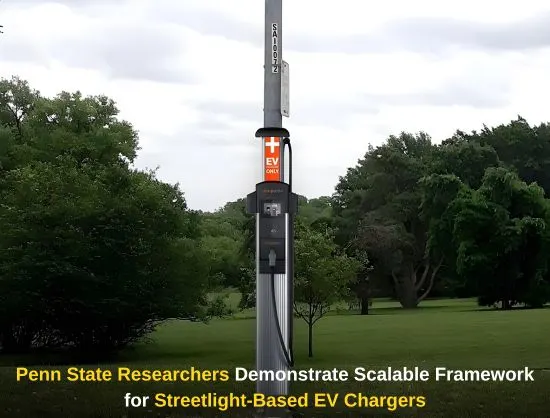A Penn State research team has successfully demonstrated that streetlights can serve as cost-effective and accessible EV charging stations, following a real-world trial in Kansas City.

October 6, 2025

Source:
College of Engineering News - Penn State
Kansas City Pilots Streetlight EV Charging Solution
Researchers from Penn State University have successfully tested a novel solution to expand electric vehicle charging infrastructure: converting existing streetlights into EV chargers. A real-world trial involving 23 repurposed streetlamps in Kansas City, Missouri, has demonstrated the system is both efficient and practical.
This initiative directly addresses a critical barrier to EV adoption in cities, where many residents in apartments and multi-unit buildings lack access to private or overnight charging.
Key Advantages Uncovered
Faster Installation: Retrofitting streetlights is significantly quicker than building new charging stations from the ground up.
Lower Costs: By tapping into the existing electrical grid that powers the lights, cities and utilities can avoid expensive and disruptive trenching and wiring projects.
Increased Accessibility: The project brings charging options directly to the curbside, a crucial step for drivers without dedicated parking spaces.
According to the Penn State College of Engineering, this approach could revolutionize how cities plan for an electric future.
Keep up with the story. Subscribe to the PR+ free daily newsletter

Source:
MSN
AI Framework Guides Equitable Deployment
A core component of the Penn State project is an AI-based deployment framework. This system analyzes urban landscapes to strategically determine the best locations for streetlight chargers, ensuring an equitable and efficient rollout.
The AI considers several factors to optimize placement and impact.
Strategic and Sustainable Planning
Equity-Focused: The model prioritizes neighborhoods where residents have limited access to private charging, combating the rise of "charging deserts."
Grid Capacity: It assesses whether the local grid can handle the increased electrical load, preventing strain on the power infrastructure.
Cost-Effectiveness: By identifying the most impactful locations, the framework helps cities maximize their investment.
This data-driven strategy is not only scalable for other cities but also more eco-friendly. "Repurposing existing infrastructure is a sustainable choice," as noted in coverage by environmental news outlets. It reduces the need for new construction and its associated carbon footprint.
Read More

Source:
Energetica India
Share this news:




















